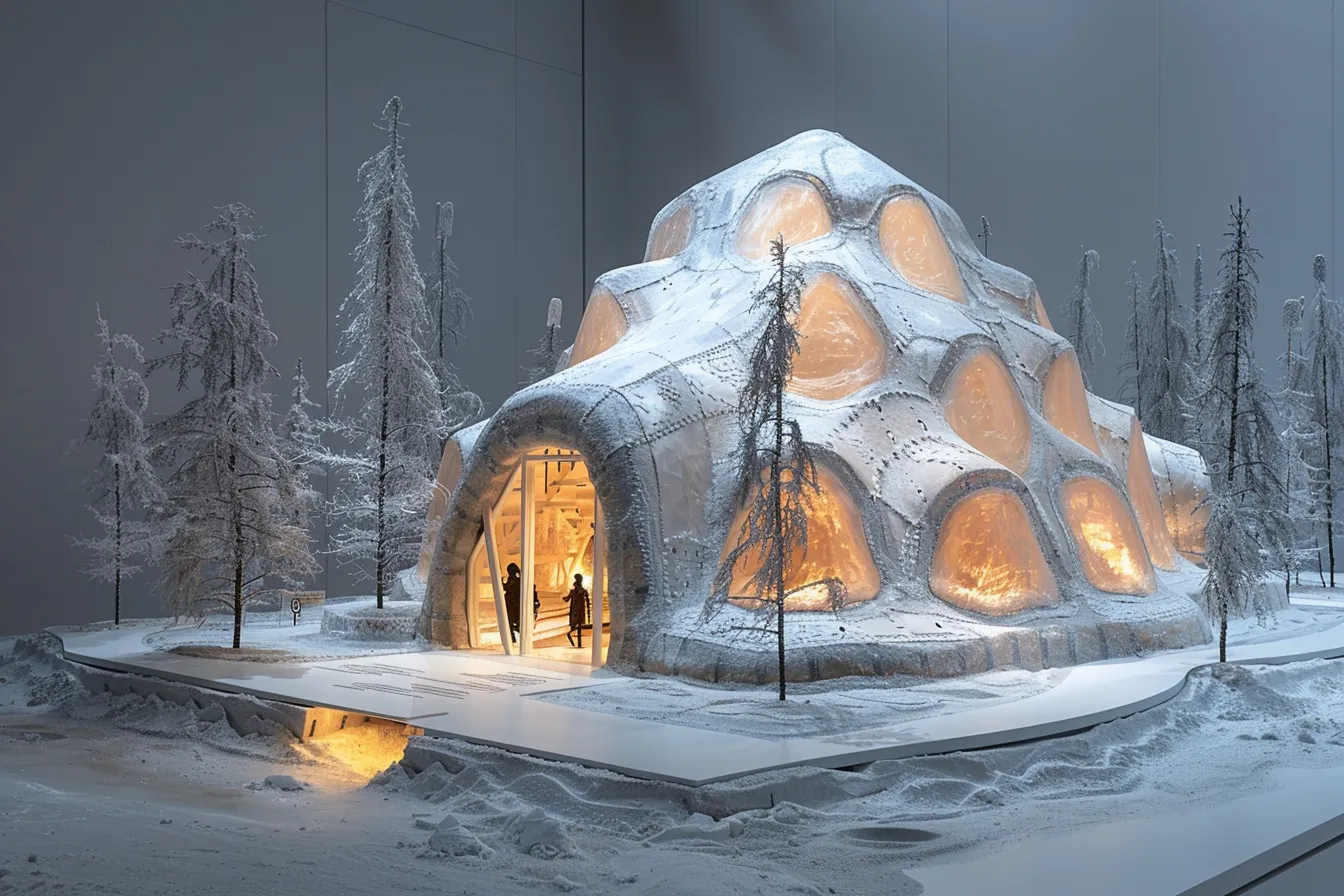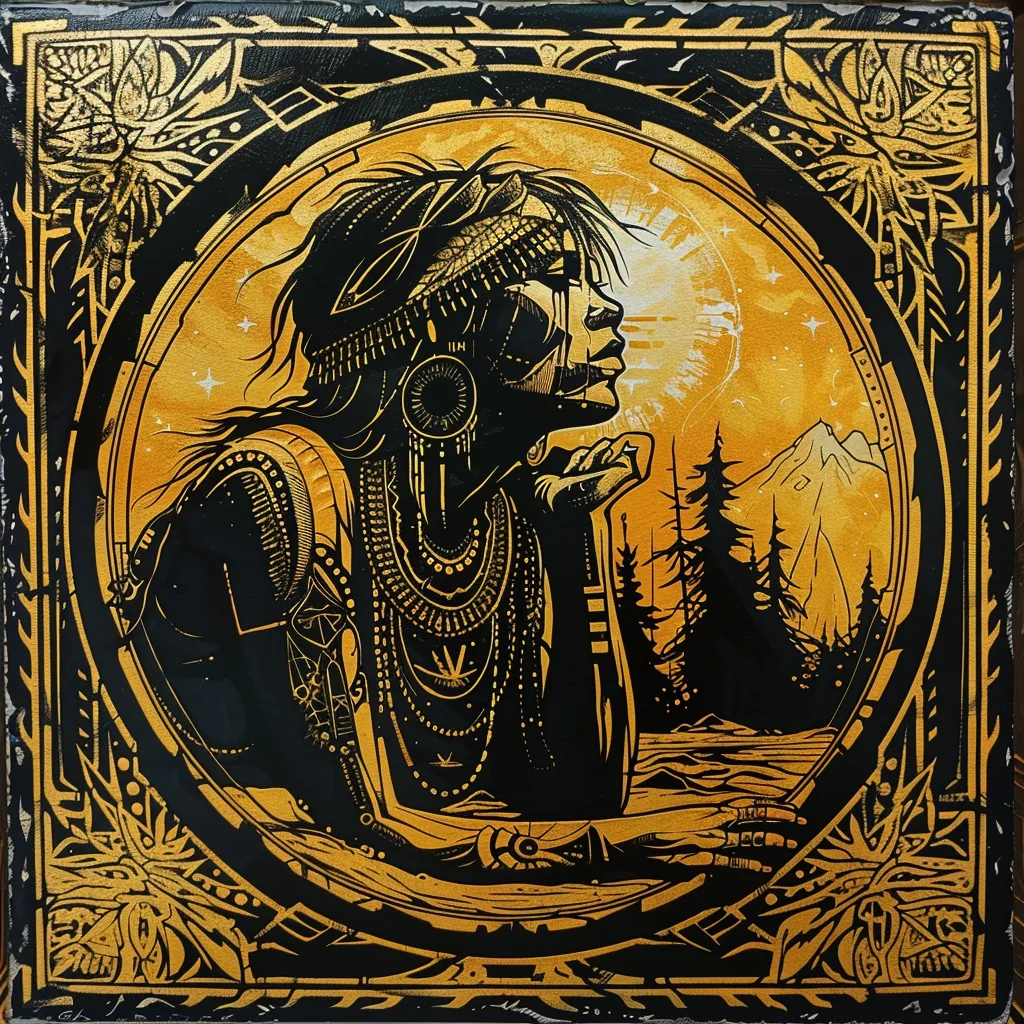Inuit (In-you-it)
Arctic peoples of North America
In the farthest reaches of Tír na nÓg, where the sun moves like a memory and the wind carves silence into stone, the Inuit dwell not in isolation, but in intimacy—with snow, with spirit, with one another. Their presence is not loud. It is earned—in the quiet after the storm, in the rhythm of breath through bone-sewn hoods, in the stories that ride the backs of seals and drift across frozen waters.
They come into view like moonlight on glacier: slow, glistening, certain. They do not conquer the cold—they collaborate with it, treating ice not as enemy but as mirror. The Inuit are a people of orientation—toward kin, toward ancestors, toward the shifting dance between seen and unseen. Here in the Realm, they do not bring fire. They bring the discipline of warmth, and the memory of what it took to keep it alive.
Geography & Historical Context
The Inuit emerged from the northernmost realms of the Mortal World—Arctic North America, stretching from Greenland to Alaska, crossing the breadth of modern Canada and northern Siberia. Their earliest ancestors, the Thule culture, rose around 1000 CE, carrying with them lifeways adapted perfectly to frozen coasts and migrating animal herds. Yet Inuit cultural memory reaches far deeper—into Paleoeskimo lineages, seaborne traditions, and stories etched in ice. Their world was not barren. It was intensely alive: whale routes pulsed with purpose, ice flows spoke in creaks and groans, the sky offered signs in aurora and stars. The Inuit were not nomads in the sense of drifting—they moved with precision, following seasonal tides and animal migrations like notes in a song. Colonial contact brought devastation—missionization, forced resettlement, disease, and language suppression. Yet through all this, the Inuit held their axis. Their strength was not in numbers or war, but in memory, adaptability, and the ability to pass culture through gesture, breath, and snow-bound syllable.Culture & Identity
Inuit culture was structured around cooperation, not hierarchy. Extended families lived communally, decisions made by consensus or necessity. Elders were revered for their memory, hunters for their reading of weather and instinct. Women held authority within the household and in matters of life, death, and spiritual knowledge. Their world was not divided between material and sacred—every seal hunted was a spirit to be thanked, every snowdrift a shape carved by the unseen. They practiced animism with intimacy: animals, tools, songs, even weather had awareness and agency. Their primary virtue was respect—for survival, for story, for the subtle lines between arrogance and alignment. Kinship extended beyond blood to include the land, the animals, the sky. Identity was not static but relational—shaped by where one slept, who one fed, and how one listened. The cold did not isolate them—it clarified what must never be forgotten.Communication & Expression
Inuit languages—particularly Inuktitut and related dialects—are polysynthetic, able to express entire worlds in a single word. They hold thousands of terms for snow, ice, sky, and states of being. Spoken expression is rhythmic and tonal, shaped by wind, mouth, and patience. Silence is a form of speech, especially among elders. Storytelling is central—myths of Sedna, the Sea Woman, of raven tricksters and shape-changers, of spirits that test hunters or protect children from hunger. These stories are not entertainment but instruction: ethical, ecological, metaphysical maps for living in balance. Tools, clothing, and songs are also forms of language. A parka sewn with care speaks of love; a drum song passed through generations encodes mourning, joy, or history. Everything in Inuit expression affirms: we were here, and we understood the silence.Economy & Lifeways
The Inuit were master subsistence engineers—navigating the Arctic through cooperation with its rhythms. They hunted seal, caribou, whale, walrus, and fish with intricate knowledge of seasonal cycles. Their tools—harpoons, sleds, stone oil lamps—were adapted with precision, often crafted from what the land gave and nothing more. Housing followed the seasons: igloos in winter, tented structures in summer, all aligned with weather patterns and windbreaks. No movement was wasted; no material unappreciated. Blubber served as light, bone as support, sinew as thread. Their clothing, especially sewn by women, was art and insulation—designed to protect life and express identity. Trade existed in tight bands across the Arctic, often ritualized and relational. Labor was divided but flexible; everyone had a role, but all could shift in emergencies. Their economy was not built on accumulation, but endurance through shared precision.Legacy & Contribution
The Inuit gifted the world with the knowledge that life can be sacred at the margins, and that hardship does not erase meaning—it refines it. Their worldview offered a profound model of climate wisdom, relational spirituality, and ecological ethics—centuries ahead of modern paradigms. They contributed innovations still revered in Tír na nÓg: kayak design, snow shelter engineering, layered clothing theory, non-verbal teaching methods, and spiritual technologies rooted in kinship with the land. Yet their greatest gift may be their ethos: that nothing essential can be owned, only cared for. In the Realm, their legacy is not in echoes, but in the clarity that follows snowfall—where memory is white, shaped by footsteps, and easily lost unless renewed.Inuit Aetherkin
Inuit Aetherkin do not settle in any one place for long, yet they are always home (and all have a home base in Ildathach). They travel light across the windblown tundras and frozen lakes of the Realm, building seasonal circles where warmth, food, and stories are shared. Their dwellings are simple—half-sunk into snowbanks, or woven from hide and spirit-thread—but rich in smell, song, and memory. They serve not as teachers, but as demonstrators. Others watch them and learn. They maintain rituals that honor Sedna and the ancestors beneath the ice, and they still hold the old drum-songs that can speak to spirits when language fails. They are often among the first to greet new arrivals who come from silence—those who are grieving, cold, or lost. They offer no sermons, only warmth and space to breathe. In this, they remind the Realm that life is not made sacred by comfort, but by the care given to one another when comfort is gone.Communities
Most Inuit Aetherkin reside at:Some Inuit Gods
See Also: Deities
Inuit Aetherkin
See Also: Aetherkin
Cultural Era: ~2000 BCE - Present Day
Parent ethnicities
Diverged ethnicities
Related Locations





















